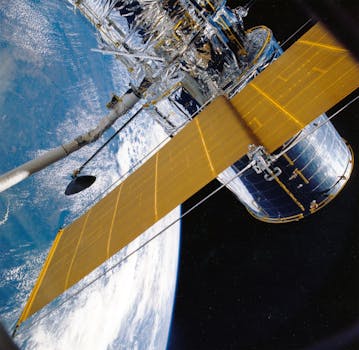
The Future of Satellites: Revolutionizing Global Connectivity and Exploration
The future of satellites holds immense promise, with advancements in technology and innovation poised to revolutionize global connectivity and space exploration. The focus keyword, future of satellites, is an exciting and rapidly evolving field that is transforming the way we communicate, navigate, and understand our planet and the universe. As we look to the future, it is clear that satellites will play an increasingly important role in shaping our world and beyond.
One of the most significant developments in the future of satellites is the proliferation of small satellites, also known as smallsats. These compact and lightweight satellites are designed to be more affordable and efficient than traditional satellites, making them an attractive option for a wide range of applications, from Earth observation and communication to scientific research and exploration. Smallsats are also more agile and flexible, allowing them to be launched into orbit more quickly and easily than larger satellites.
Another key trend in the future of satellites is the rise of satellite constellations. These networks of satellites are designed to provide global coverage and connectivity, enabling a wide range of applications, from broadband internet and communication to navigation and Earth observation. Satellite constellations are being developed by a number of companies, including OneWeb, SpaceX, and Amazon, and are poised to revolutionize the way we access and use satellite-based services.
Advances in Satellite Technology
Advances in satellite technology are driving the future of satellites, with innovations in areas such as propulsion, power, and communication systems. For example, the development of electric propulsion systems is enabling satellites to operate more efficiently and effectively, while advances in solar panel technology are providing more power and longer mission durations. Additionally, the use of advanced materials and manufacturing techniques is allowing for the creation of lighter and more durable satellites.
Artificial intelligence and machine learning are also being used to enhance satellite operations, from autonomous navigation and control to data processing and analysis. These technologies are enabling satellites to operate more independently and make decisions in real-time, reducing the need for human intervention and increasing the speed and accuracy of satellite-based services.
Applications of Satellites
Satellites have a wide range of applications, from communication and navigation to Earth observation and scientific research. In the field of communication, satellites are used to provide broadband internet and phone services to remote and underserved areas, as well as to enable global communication and connectivity. In navigation, satellites are used to provide location information and timing signals, enabling applications such as GPS and precision agriculture.
In Earth observation, satellites are used to monitor the environment, track climate change, and predict weather patterns. They are also used to study the Earth’s oceans, land, and atmosphere, providing valuable insights into our planet’s natural systems and processes. In scientific research, satellites are used to study the universe, from the sun and the solar system to distant galaxies and celestial phenomena.
Challenges and Opportunities
Despite the many advances and applications of satellites, there are also challenges and opportunities that must be addressed. One of the biggest challenges is the growing problem of space debris, which poses a significant threat to the safety and sustainability of satellite operations. Additionally, the increasing use of satellites is raising concerns about spectrum interference and congestion, as well as the need for more efficient and effective satellite management and regulation.
However, these challenges also present opportunities for innovation and growth, from the development of new technologies and services to the creation of new industries and job opportunities. The future of satellites is a exciting and dynamic field, full of promise and potential, and it will be interesting to see how it evolves and shapes our world in the years to come.




